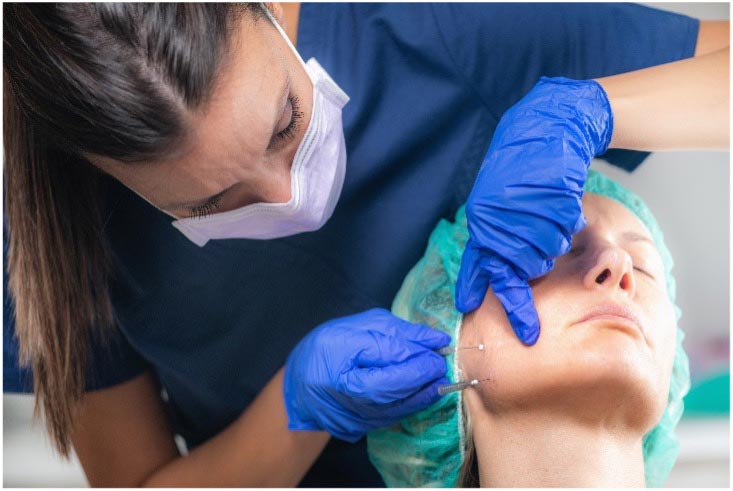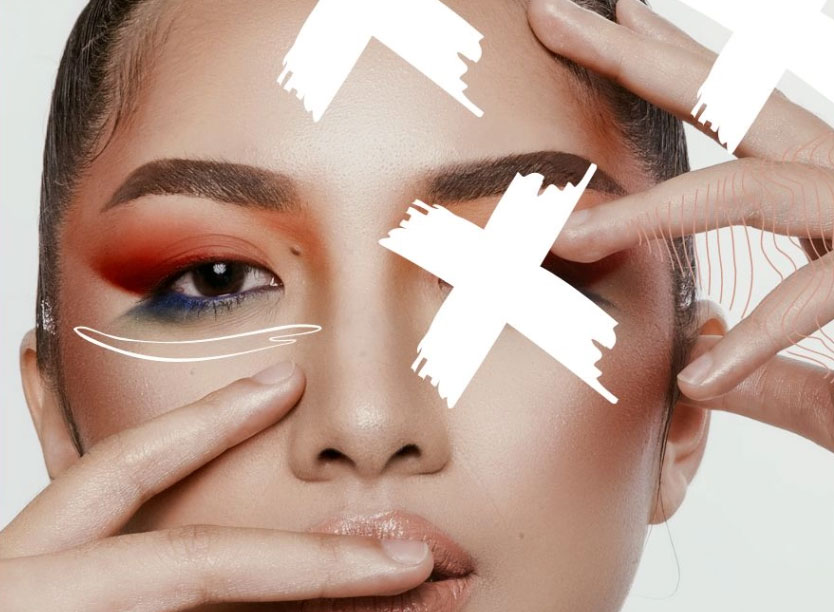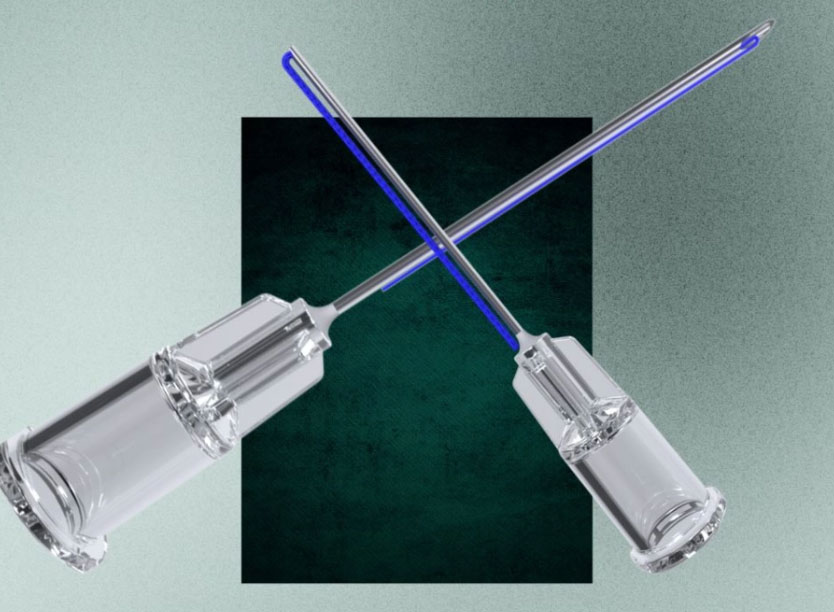Advantages & Disadvantages of Various Thread Sutures
Thread Lift procedures within aesthetics is experiencing tremendous growth within aesthetics due to their ability to deliver results comparable to surgical procedures though are semi-permanent lasting up to (2) years.
The growth of Thread Lifting procedures since the late 1990s and the evolution of technology and placement techniques have provided indisputable evidence of the effectiveness and high safety profile associated with these procedures. Patients are now demanding these procedures from their practitioners because of its ability to lift sagging skin, refresh skin through collagen synthesis, and rejuvenate the skin in facial and body part areas.

Originally designed to lift ptotic facial tissues, the newer technologies and types of threads are now being utilized throughout aesthetics. Thread Lift procedures are minimally invasive, non-surgical solution for a number of aesthetic presentations to correct the signs of aging and skin laxity.
There are (3) main types of threads that are used and are supplied in various lengths and thicknesses. The largest threads have the lowest USP thickness (<1) and the smallest thicknesses are (>5+) – the USP thickness not only takes into effect the size of the thread but also its tensile strength (how strong the thread can be pulled back). The different types of threads used aesthetically can be classified as follows:
- Mono (Smooth): Mono threads are threads without barbs and is used to support tissue or other threads while creating collagen synthesis that will last 12-24months. Mono threads are usually placed in a mesh type pattern and has a skin tightening and rejuvenating effect where placed. Mono (Smooth) threads are often used in the perioral, eye, arms, and neck areas and are used to create volume and tightening of skin tissues nut not lifting.
- Twisted (Screw): Twisted threads utilize single or double threads intertwined together around the inserting needle and places all the threads at one time. Twisted (Screw) threads are used for volumizing depressed areas of the skin or can be used to outline the vermillion borders of the lip. Twisted threads result in a stronger effect over the mono threads and are used for general face-lifting or dermal filler applications such as Nasolabial Folds or Marionette Lines.
- Barbed (Cog): Barbed threads are similar to mono threads, but have barbs deigned to attached to the underside of the skin and pull back lax tissues. Unlike the other earlier types of threads, they are suspended under the skin and do not require anchoring points. There are many thickness and length option for a variety of lifting options for the face and body area to be corrected and lifted. The entire thread is resorbable and has the same collagen synthesis effect as the other threads.
PDO, PLLA, and PCL Thread Sutures
The material used in the threads now available include; Polydioxanone (PDO), Poly-L-Lactic Acid (PLLA) and Polycaprolactone (PCL). There are advantages and disadvantages to each of these threads from regulatory issues to tensile strength as well as the ability to create results patients expect from the procedure. The following is a quick summary of some of the characteristics associate with each:

Polydioxanone (PDO): PDO threads are the most popular of all the various types of threads since the it has the most options to lift and rejuvenate tissues for 18-24 months. It is commonly used in surgeries and the effects of polydioxanone (PDO) threads stimulate the production and synthesis of collagen in the skin for up to 12-18 months.
PDO Threads function to initiate changes in the dermis and is effective in improving pores and fine wrinkles. In addition, PDO Threads can be placed in the subcutaneous region of the skin and deep dermis increasing thickness of the papillary dermis (Grenz Zone) where new collagen in tissue is formed.
As the new PDO Threads initiate collagen synthesis newly formed collagenous connective tissues merge into the pre-existing fibrous connective tissue by mechanotransduction migrating into immediate surrounding tissues.
PDO threads can effectively improve the elasticity of the skin in the area of the procedure and by the effect of myofibroblasts to tighten the skin and effective for body, face shaping, contouring and tissue rejuvenation procedures.
Poly-L-Lactic Acid (PLLA): Another material often chosen for surgical sutures is the Poly-L-Lactic Acid (PLLA). The PLLA has been observed to be even more effective at simulating collagen production than PDO and is made from the same material as Sculptra®. This material has a lifetime of two years or more, and during the biodegradation process breaks down into lactate, glucose, carbon dioxide and water. There has been reported delayed granuloma formation from excessive placement of threads in a particular area.
The disadvantage of PLLA thread sutures is that in a barbed (cog) form they do not possess the same tensile strength as PDO thread sutures. The sharp barbed structures break upon pressure which not only creates a problem with fixation to tissues but can lead to unwanted aesthetic results. There is one company, Sinclair Pharma, distributors of FDA Approved Silhouette Soft Sutures have a suspension lift made from tiny cones which replaces the tensile strength issues with PLLA barbed sutures. However, the procedure using these types of sutures require additional training as the depth of the placement and the suitable locations are limited to the face and neck. Most physicians if they use PLLA thread sutures will use only the smooth (mono) threads for collagen remodeling with results similar to the PDO Threads.
PCL (Polycaprolactone): Presently the use of PCL Threads is not very common but it is FDA Approved for certain drug deliveries due to its extended resorption rate of up to (2) years. Another disadvantage is that it is commonly used only in the face and in Europe where it is an option the barbed option is receiving poor reviews because of its flexibility and fixation to tissue. However, the mono (smooth) threads and Screw (Twisted) threads are commonly used because, the chemical bonds and structure in the PCL (composite) are stronger and more complex which takes a much longer time to be dissolved completely. Anecdotal evidence has shown that PCL may stimulate collagen synthesis greater than PDO or PLLA.
In the near future PCL (Polycaprolactone) may receive additional clearances from the FDA as there are dermal filler products presently being evaluated for FDA Approval. There are practitioners using PCL Thread Sutures for aesthetic purposes but are having to purchase these items from Europe or Korea and it is questionable as to the legitimacy of their use even though they are safe. It is our recommendation not to use these types of threads for liability purposes at this time.
More Articles
Published: Aug 23/2022
FDA to Crackdown on Non-FDA Cleared PDO Threads
FDA to Crackdown on Non-FDA Cleared PDO Threads. A spokesman for the agency further commented that "it will be increasingly difficult to stop the various channels that people can acquire these non-FDA Cleared devices so the emphasis will be on the physician or healthcare professional administering these unapproved devices"…
Published: Jul 24/2022
Why Incorporate PDO Threads into your Practice?
The United States is one of the largest markets for minimally invasive aesthetic procedures in the world. The demand for PDO Thread procedures has increased exponentially in the past (5) years and will continue to grow at rates over 7.4% CAGR (Compound Annual Growth Rate)…
Published: Jun 10/2022
12 Popular Facial PDO Thread Treatments
Understanding the many uses of PDO Threads for facial indications. The procedures list the approximate time and market prices for each procedure but does not encompass all facial treatments…




